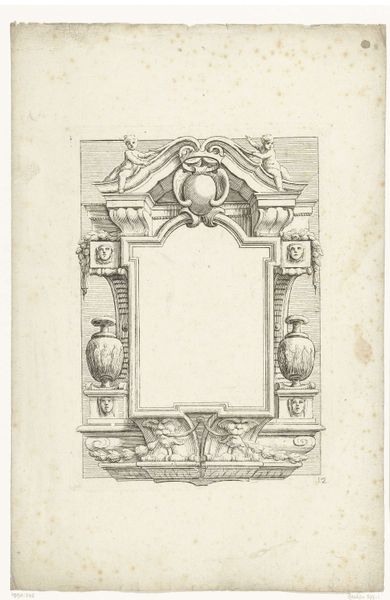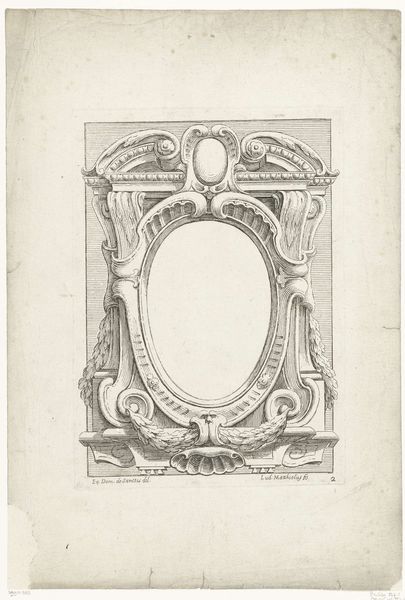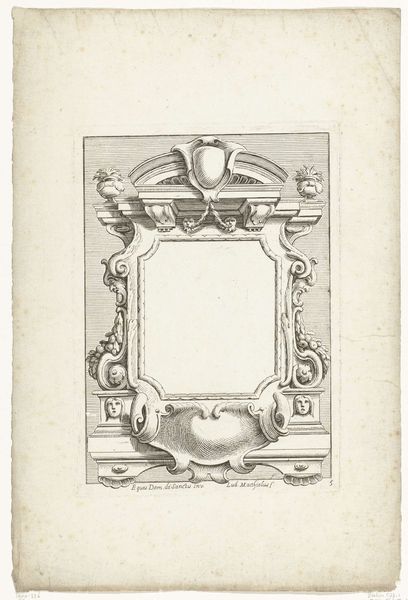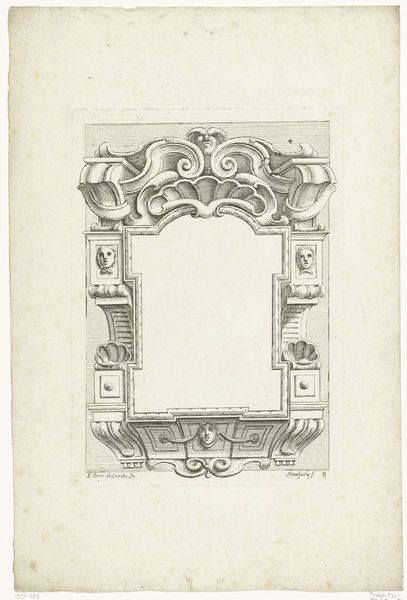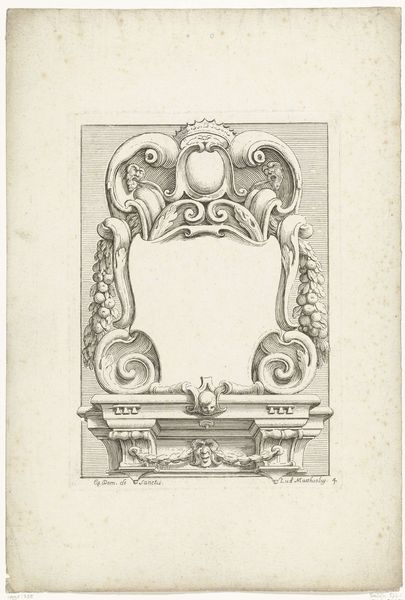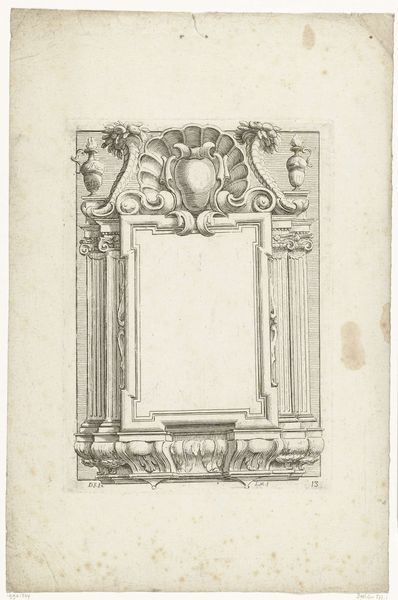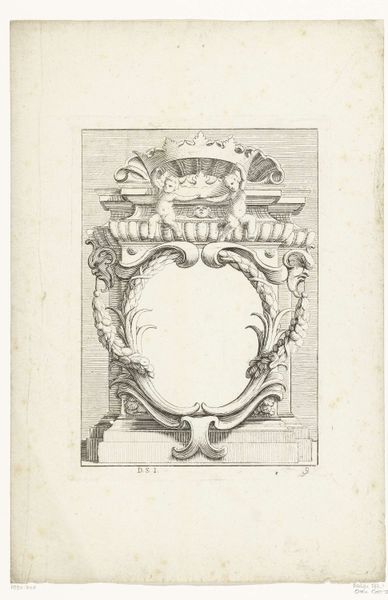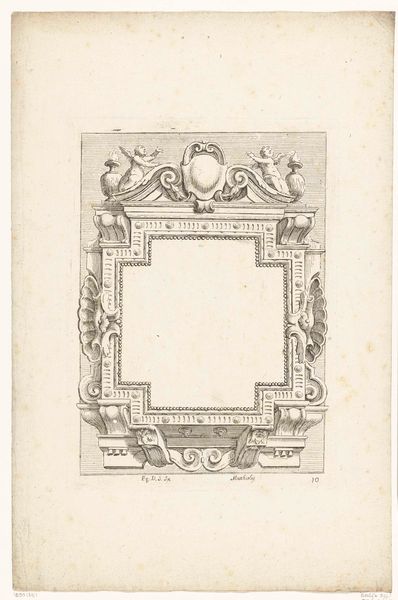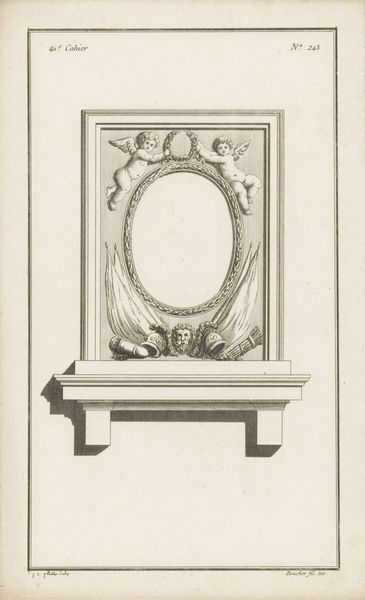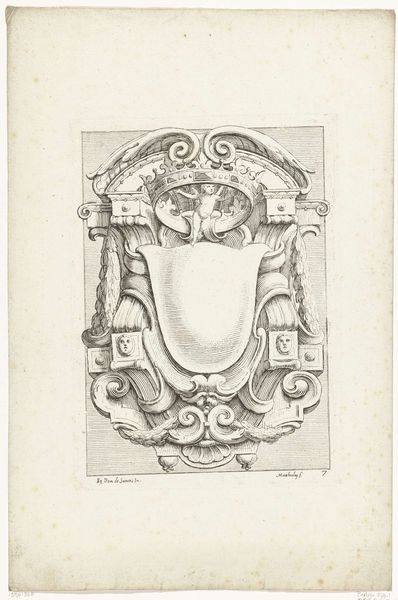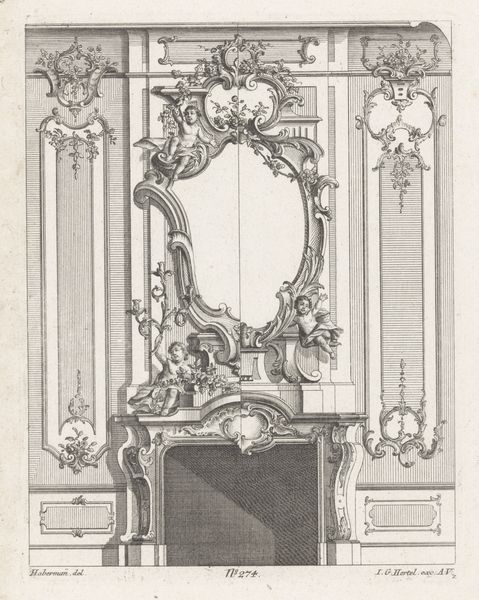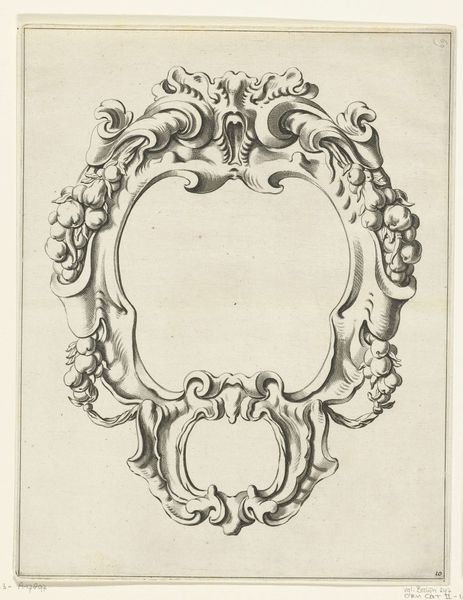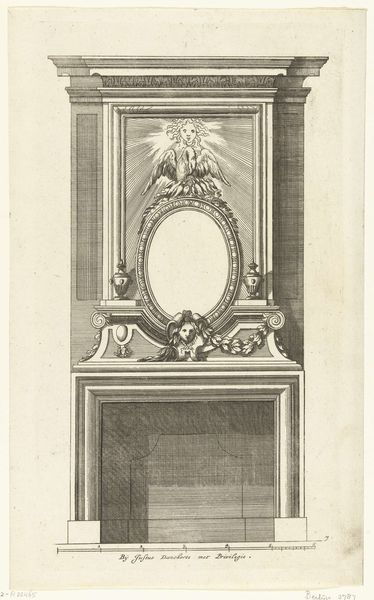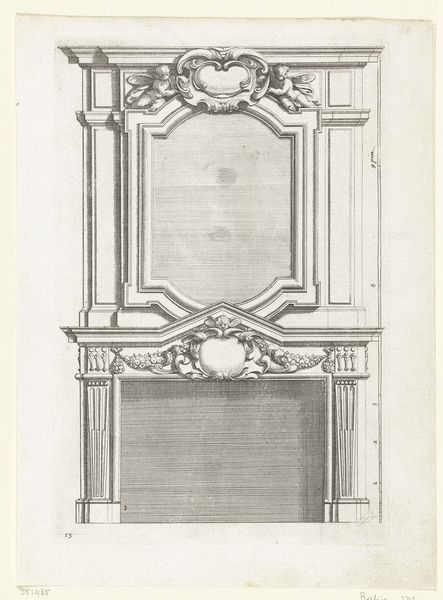
drawing, graphic-art, engraving
#
drawing
#
graphic-art
#
baroque
#
pen drawing
#
old engraving style
#
engraving
Dimensions: height 240 mm, width 173 mm
Copyright: Rijks Museum: Open Domain
This is Lodovico Mattioli’s “Cartouche met twee gevleugelde vrouwelijke hermen,” made sometime between the late 17th and early 18th century. The image presents an elaborate frame, adorned with winged female herms. These figures, a fusion of human and architectural form, evoke a classical past, where such motifs symbolized protection and served as boundary markers. The herms, with their draped bodies and wings, remind me of similar figures in ancient Roman frescoes. These figures acted as guardians and conveyed messages of power and divine favor. Over time, the herm figure evolved, transitioning from sacred idol to decorative element, yet retaining a sense of awe and the numinous. The persistence of the herm in art speaks to our collective subconscious, reflecting a deep-seated need for protection and a connection to ancestral power. This cartouche isn’t merely decorative. It's a conduit through which primal emotions resurface, a testament to the enduring power of symbols to evoke profound psychological responses.
Comments
No comments
Be the first to comment and join the conversation on the ultimate creative platform.
